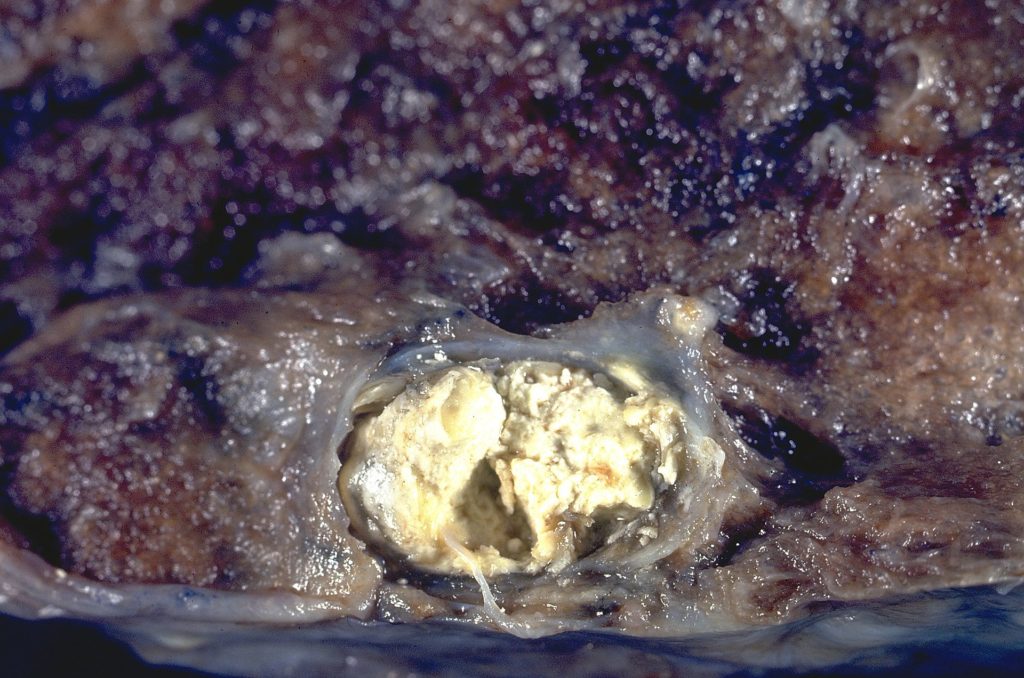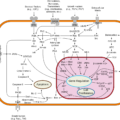Necrosis Necrosis Pathology Video Necrosis is the premature pathologic death of cells in living tissue. Acute inflammation can result in the death of a large group of cells which will cause necrosis. Necrosis is always pathologic. Necrosis is never physiologic….
Necrosis Pathology Study Guide

Caseous Necrosis. Initial (primary) infection with Mycobacterium. tuberculosis in an immunocompetent individual usually occurs in an upper region of the lung producing a sub-pleural lesion called a Ghon focus. Granulomatous involvement of peribronchial and/or hilar lymph nodes is frequent in primary tuberculosis due to lymphangitic spread from the Ghon focus. The early Ghon focus together with the lymph node lesion constitute the Ghon complex. These lesions undergo healing and over time usually evolve to fibrocalcific nodules. The combination of late fibrocalcific lesions of the lung and lymph node which evolved from the Ghon complex is referred to as the Ranke complex. This image provides a good example of "caseous necrosis" The "cheesy" appearance of the necrosis is due to incomplete proteolytic digestion of the necrotic tissue and is apparent only on gross or macroscopic examination. The terms "caseous", "caseating" and "caseation" are often used erroneously to describe the microscopic appearance of necrotizing granulomas. Yale Rosen. Not altered. CC BY-SA 2.0


